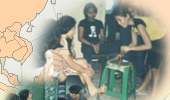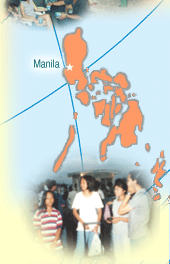
Dual Protection Outreach for High-Risk Adolescents
Through the USAID-funded AIDS Surveillance and Education Program (ASEP), PRIME II partner PATH promoted safer reproductive health behaviors among groups at high risk of exposure to sexually transmitted infections (STIs) and HIV. As part of this effort, PRIME II began working in July 2002 to improve access to family planning information and counseling among adolescent commercial sex workers, their clients/partners, and other adolescents who engage in risky sexual behavior. The intervention focused on encouraging adolescents to use modern contraception along with condoms through strengthening the capacity of ASEP partner NGOs to deliver FP counseling at four ASEP sites: Angeles, Cebu, Iloilo and Zamboanga. Because high-risk youth said they depended on Community Health Outreach Workers (CHOWs) and ASEP peer educators for health information, these non-traditional providers were galvanized to expand dual protection outreach. Youth, CHOWs and program managers offered input into the design and implementation of the intervention, which included refresher training in family planning and adolescent health, a job aid for CHOWs and peer educators to standardize messages on dual protection, and pocket-size educational materials for youth to convey facts about dual protection and how to locate ASEP’s youth-friendly pharmacists.
Key Results: A behavioral monitoring survey (BMS) conducted in 2003 found that exposure to the intervention was significantly associated with increased condom use among young female sex workers (YFSWs) and male clients/partners. Among young female sex workers (YFSWs), significantly more reported using a method to prevent pregnancy in the 2003 survey than in a 2002 baseline BMS (73% vs. 62%, n=441, n=472), with condoms being the most frequently mentioned method. A significant increase in reported use of modern contraceptive methods (9% vs. 6.7%) and condom plus a modern method (9.4% vs. 6.4%) among YFSWs offered promising indications that dual protection messages were reaching target audiences.
|











